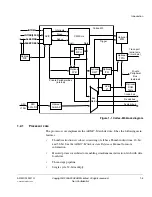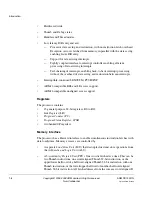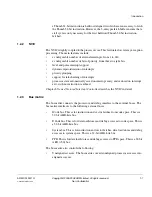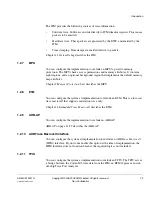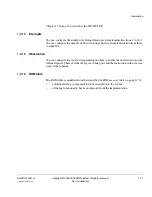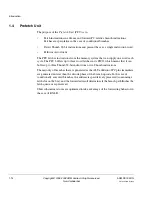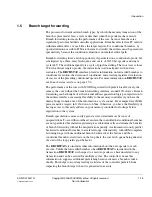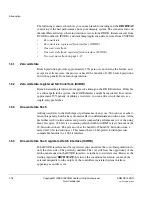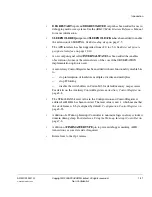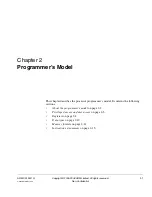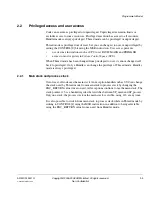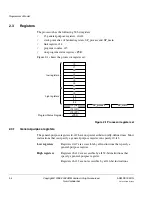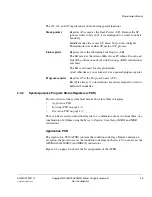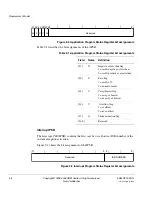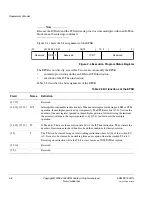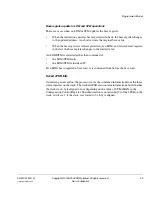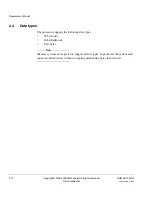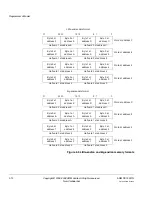
Introduction
ARM DDI 0337G
Copyright © 2005-2008 ARM Limited. All rights reserved.
1-19
Unrestricted Access
Non-Confidential
1.7
Product revisions
This section summarizes the differences in functionality between the different releases
of this processor:
•
Differences in functionality between r0p0 and r1p0
•
Differences in functionality between r1p0 and r1p1
on page 1-20
•
Differences in functionality between r1p1 and r2p0
on page 1-20.
1.7.1
Differences in functionality between r0p0 and r1p0
In summary, the differences in functionality include:
•
Addition of configurable data value comparison to the DWT module. See
DWT
on page 11-13.
•
Addition of a MATCHED bit to
DWT_FUNCTION
. See
DWT
on page 11-13.
•
Addition of
ETMFIFOFULL
as an input to Cortex-M3. See
ETM interface
on
page A-14.
•
Addition of
ETMISTALL
as an output to Cortex-M3. See
ETM interface
on
page A-14.
•
Addition of SWVMode to the ITM. To support SWVMode,
TPIUACTV
and
TPIUBAUD
have been added as outputs from the TPIU and are inputs to the
processor. See
ITM
on page 11-30.
•
CPUID Base Register VARIANT field changed to indicate Rev1. See
NVIC
register descriptions
on page 8-7.
•
Cortex-M3 Rev0 Bit-band accesses in BE8 mode required access sizes to be byte.
Cortex-M3 Rev1 has been changed so that BE8 bit-band accesses function with
any access size.
•
Addition of a configuration bit called STKALIGN to ensure that all exceptions
have eight-byte stack alignment. See
NVIC register descriptions
on page 8-7.
•
Addition of the Auxiliary Fault Status Register at address
0xE000ED3C
. To set this
register, a 32-bit input bus called
AUXFAULT
has been added. See
NVIC register
descriptions
on page 8-7.
•
Addition of HTM support. See Chapter 16
AHB Trace Macrocell Interface
.
•
ICode and DCode cacheable and bufferable HPROT values permanently tied to
write-through. See
ICode bus interface
on page 12-4 and
DCode bus interface
on
page 12-6.

